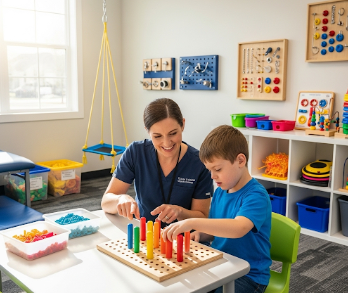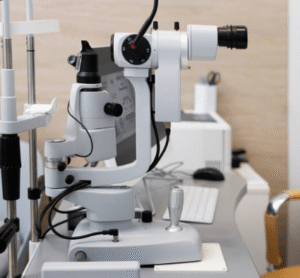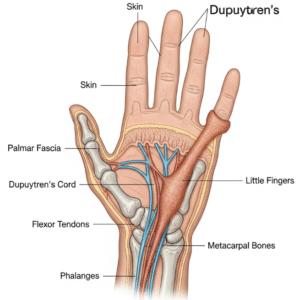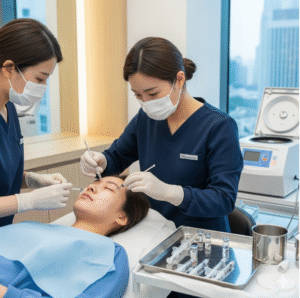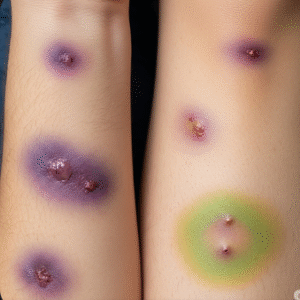What it is
Occupational therapy (OT) is a rehabilitative health service aimed at helping individuals perform daily activities and achieve independence after illness, injury, or disability. Unlike physical therapy, which focuses primarily on movement and strength, occupational therapy focuses on functional abilities, daily tasks, and improving quality of life.
Key points:
- Helps individuals of all ages, from children with developmental disorders to adults recovering from injury or illness.
- Focuses on physical, cognitive, sensory, and emotional skills required for daily activities.
- Uses personalized therapeutic interventions, adaptive tools, and environmental modifications.
- Supports independence, productivity, and social participation.
Occupational therapy is essential for rehabilitation, chronic condition management, and developmental support, ensuring patients can participate fully in their lives.
Why it’s done
Occupational therapy is prescribed for a wide variety of medical and developmental reasons:
- Post-injury or post-surgery rehabilitation: Helps restore function after stroke, orthopedic surgery, or traumatic injury.
- Neurological conditions: Supports individuals with stroke, Parkinson’s disease, multiple sclerosis, or cerebral palsy.
- Developmental or learning disorders: Assists children with autism, ADHD, or sensory processing disorders.
- Mental health support: Helps people with anxiety, depression, or PTSD regain daily functioning.
- Chronic illness management: Supports patients with arthritis, COPD, or cardiovascular disease in maintaining independence.
- Aging-related concerns: Enables older adults to maintain mobility, independence, and cognitive function.
Benefits:
- Improves quality of life, self-confidence, and independence.
- Reduces reliance on caregivers or assistive services.
- Enhances productivity, social participation, and emotional well-being.
Alternatives
Other interventions may complement or partially substitute for occupational therapy:
- Physical therapy: Focuses on strength, flexibility, and mobility rather than functional daily tasks.
- Speech and language therapy: Addresses communication, swallowing, or cognitive-linguistic challenges.
- Psychotherapy or counseling: Addresses mental health or emotional regulation, but may not improve functional independence.
- Adaptive technology or assistive devices alone: While helpful, therapist-guided training ensures proper use and integration into daily life.
Important: Occupational therapy is unique because it integrates physical, cognitive, and emotional rehabilitation into practical daily life skills.
Preparation
Preparation for occupational therapy varies depending on the patient’s condition:
- Medical assessment: Provide the therapist with relevant medical history, imaging reports, or discharge summaries.
- Goal setting: Identify specific functional goals, such as dressing, cooking, or returning to work.
- Environment review: Prepare home or workplace for possible modifications.
- Clothing: Wear comfortable clothing to allow movement and participation in exercises.
- Parental or caregiver involvement: For children or dependent adults, active participation enhances outcomes.
Patient instructions:
- Attend scheduled therapy sessions consistently.
- Follow home exercise programs and activity recommendations.
- Communicate progress, challenges, and concerns with the therapist.
How it’s done
Occupational therapy is a personalized, goal-oriented process:
- Assessment:
- The therapist evaluates physical abilities, cognitive function, sensory processing, and emotional status.
- Activities of daily living (ADLs) and instrumental activities of daily living (IADLs) are assessed.
- Goal setting:
- Establish short-term and long-term functional goals with the patient and family.
- Goals may include self-care, mobility, communication, work, or leisure skills.
- Therapeutic interventions:
- Task-specific training: Practicing activities like dressing, cooking, or using a computer.
- Adaptive techniques: Teaching alternative methods to complete tasks efficiently.
- Assistive devices: Recommending tools like grab bars, wheelchairs, splints, or ergonomic furniture.
- Sensory integration therapy: Particularly for children with autism or sensory processing disorders.
- Cognitive rehabilitation: Improving memory, attention, problem-solving, and planning skills.
- Education and training:
- Educate patients and caregivers on safe techniques and strategies to maintain independence.
- Modify the home, school, or workplace environment for accessibility and safety.
- Progress monitoring:
- Regular assessments ensure therapy adapts to patient progress.
- Therapy intensity and focus are adjusted to achieve optimal outcomes.
Duration:
- Sessions typically last 30–60 minutes, 1–5 times per week, depending on patient needs.
- Overall therapy programs may span weeks to months, or even years for chronic or developmental conditions.
Recovery / Post-Therapy Considerations
Occupational therapy helps patients regain functional independence progressively:
- Ongoing improvement: Patients often notice increased confidence and capability in daily activities.
- Home exercise programs: Essential for maintaining skills learned in therapy sessions.
- Caregiver involvement: For dependent patients, consistent support enhances recovery.
- Long-term maintenance: Chronic or progressive conditions may require periodic therapy to sustain function.
Benefits:
- Enhanced self-care and mobility.
- Improved work, school, and social participation.
- Reduced risk of secondary injuries or complications.
- Increased emotional well-being and independence.
Complications / Risks
Occupational therapy is generally safe, but minimal risks may include:
- Temporary fatigue or soreness after physical exercises.
- Frustration or emotional distress if progress is slower than expected.
- Risk of injury: Rare, usually prevented by proper supervision and adaptive techniques.
- Non-compliance: Reduced effectiveness if home exercises or therapist recommendations are not followed.
Prevention / Management:
- Therapy is individually tailored to patient abilities and health status.
- Therapists provide guidance, supervision, and adjustments to minimize risks.
- Clear communication between therapist, patient, and caregivers ensures safe and effective therapy.
Treatment Options in Korea
Occupational therapy is widely available in hospitals, rehabilitation centers, schools, and private clinics across Korea.
Key features:
- Services are provided for children, adults, and elderly patients.
- Available for post-surgical rehabilitation, stroke recovery, developmental disorders, chronic illness, and mental health support.
- Includes hands-on therapy, adaptive training, and environmental modifications.
- Multidisciplinary collaboration with physicians, physical therapists, speech therapists, and psychologists.
- Government and private insurance may cover part of the therapy costs, depending on the diagnosis.
Benefits in Korea:
- Enhances independence and quality of life.
- Supports return to work, school, or daily activities.
- Improves functional outcomes for chronic, developmental, and post-injury conditions.
- Provides family-centered care with guidance and support for caregivers.
Additional Considerations for Patients and Caregivers
- Active participation and motivation are key for successful outcomes.
- Maintain consistent home practice and therapy adherence.
- Monitor for progress, setbacks, or complications and communicate with the therapist.
- Use assistive devices and adaptive techniques as instructed to enhance independence.
- Incorporate therapy goals into daily routines for maximum functional improvement.
Summary: Occupational therapy in Korea is a safe, effective, and evidence-based approach to improving functional independence for individuals of all ages. By combining personalized interventions, adaptive strategies, and environmental modifications, occupational therapists help patients achieve meaningful participation in daily life, enhance quality of life, and regain independence after illness, injury, or disability.

